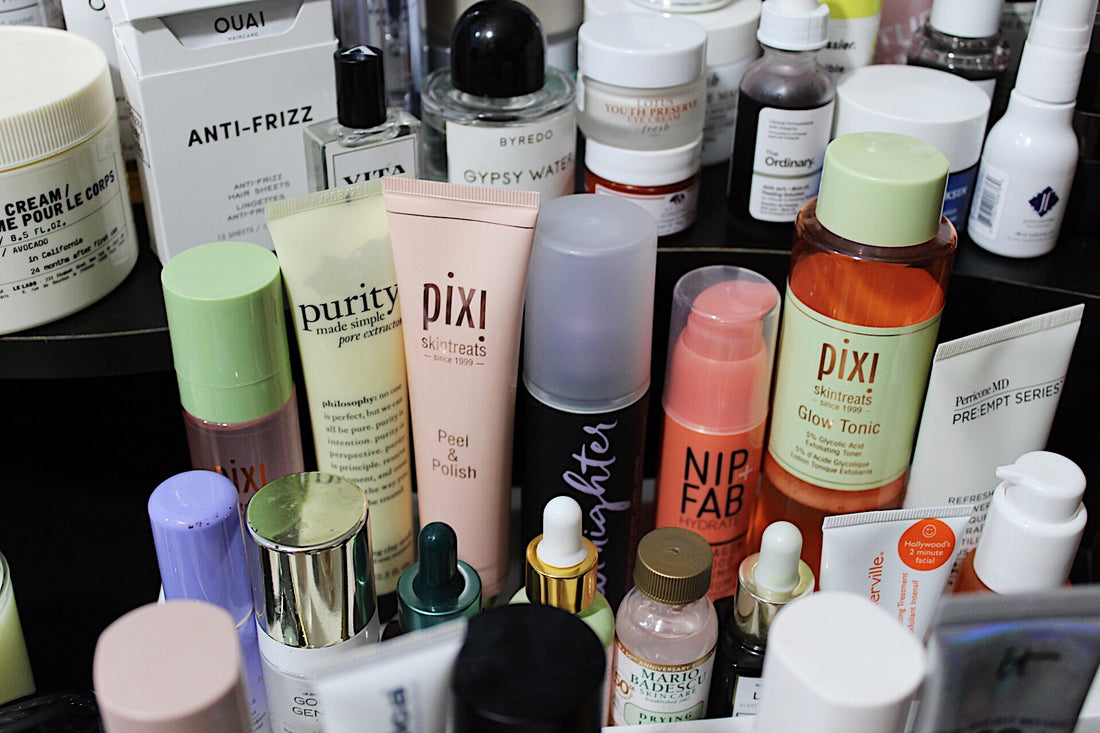
Mastering Your Skincare Regimen: A Beginner’s Guide
Share
"Can I combine Lactic Acid 5% + HA with Niacinamide 10% + Zinc 1%? Which product should I use first, Hyaluronic Acid 2% + B5 or Multi-Peptide + HA Serum? And when should I apply SPF?" If these questions sound familiar, you’re not alone! Navigating the world of skincare can feel overwhelming with so many products and active ingredients. But fear not—this beginner’s guide is here to help you master your skincare routine with confidence, break down the essentials, and answer your burning questions.
We’re also going to make a distinction between a regimen and a routine. When we say regimen, we’re talking about the whole skincare process including AM & PM and may span multiple days. A routine on the other hand is just the products that are used in one application - so the AM routine or PM routine.
How Many Products Do i Need?
The number of skincare products you need can depend on your skin type and concerns. Those with sensitive skin or beginners to certain ingredients might opt for a minimal routine, while skincare aficionados may prefer a more extensive, layered approach.
Think of a skincare regimen in three main stages: Prepare, Treat, and Lock In.
Step 1: Prepare – The Foundation of Your Routine
The first step in any skincare routine is cleansing. It helps remove dirt, oil, and impurities that build up on your skin throughout the day. Opt for a gentle cleanser that suits your skin type—whether oily, dry, or sensitive. You want something that cleans without stripping your skin’s natural moisture.
Tips for cleansing:
- Wash your face morning and night.
- For makeup wearers, a double cleanse (using an oil-based cleanser first, followed by a water-based one) works wonders.
Step 2: Treat – Target Your Skin Concerns
Here’s where things can get tricky. This step is all about serums and treatments designed to target specific concerns like acne, fine lines, or hyperpigmentation. Treatments are often more potent, so layering them correctly is essential. Generally, start with the lightest, water-based serums first and finish with thicker, oil-based treatments. Apply water-based treatments first, followed by anhydrous (water-free) solutions or oil formulations, followed by creams or suspensions.
What happens if there is more than one product with the same format?
Ultimately they can be layered in any order, but we recommend focusing on the primary concern first. For instance, if you’re looking to target signs of aging as your primary concern and have both a multi-peptide and Hyaluronic acid we’d recommend applying Multi-Peptide Serum first because it targets signs of aging while Hyaluronic Acid targets dryness.
Conflicting Products
We know conflicts can seem intimidating, but they aren’t! There are two types of conflicts: conflicts of ingredients and conflicts of tolerance but for simplicity’s sake, we’re going to treat them the same.
We’re also going to make a distinction between a regimen and a routine. When we say regimen, we’re talking about the whole skincare process including AM & PM and may span multiple days. A routine on the other hand is just the products that are used in one application - so the AM routine or PM routine.
Let’s dive into conflicts. Take for example Vitamin C and Niacinamide - two active ingredients we don’t recommend using together in the same routine. The key word here is routine. You can use Niacinamide in the AM routine and Vitamin C in the PM routine -- just not together in the morning or evening.
If your current regimen is more complex and contains multiple conflicting ingredients, this is when you might start changing your routines by day. On the first day, you might be using Antioxidants and Direct Acids, on your second day you might be using Peptides, and on the third day Vitamin C… and so on. It’s perfectly okay to rotate products!
Step 3: Moisturize – Lock in the Goodness
No matter your skin type, moisturizing is crucial. Moisturizers act as a seal to lock in all the treatments you’ve applied. If you have oily skin, look for lightweight, non-comedogenic options. For dry or mature skin, opt for richer, more hydrating creams.
Pro tip: Always apply moisturizer on damp skin to lock in hydration more effectively.
Step 4: Protect – SPF Is Your Best Friend
The final step—never skip it! SPF is the most important product in your skincare routine, especially in the morning. Sunscreen protects your skin from harmful UV rays, preventing premature aging and skin damage. Apply your SPF last in your morning routine after moisturizing, and always choose a broad-spectrum SPF of at least 30.
When should I apply SPF? Every. Single. Morning. And reapply throughout the day if you’re exposed to the sun!
Bonus: Building a Routine for Your Skin Type
Every skin type has its own needs, and understanding yours is key to mastering your routine. Here’s a quick breakdown:
- Oily/Acne-Prone Skin: Opt for lightweight, oil-free products and include a BHA like salicylic acid.
- Dry Skin: Focus on hydrating ingredients like hyaluronic acid and ceramides.
- Combination Skin: Find a balance by treating oilier areas with lighter products and drier areas with richer ones.
- Sensitive Skin: Stick to gentle, fragrance-free formulas and introduce new products slowly.
FAQs About Skincare Regimens
1. How do I introduce a new product into my routine?
Start by patch-testing on a small area to check for irritation. Then, use it once or twice a week, gradually increasing frequency as your skin adjusts.
2. How can I tell if a product is working for my skin?
Positive signs include improved texture, hydration, and radiance, usually visible in 2–4 weeks. If you experience redness, irritation, or breakouts, it might be time to reassess.
3.How to stop skincare pilling?
This can be caused by many reasons such as the amount of product being applied or the products being used. Some formulas may just not layer well together.
To reduce the chances of pilling, we recommend applying less product than you think (2-3 drops!) and letting it fully absorb before applying the next one.
Final Thoughts
Creating a skincare regimen can feel overwhelming, but it’s all about listening to your skin and finding what works best for you. Start simple, focus on consistency, and remember that patience is key—results take time! Whether you’re a skincare minimalist or enjoy a multi-step ritual, each routine is unique and should ultimately make you feel good. And don’t forget: SPF is your skin’s best friend!
